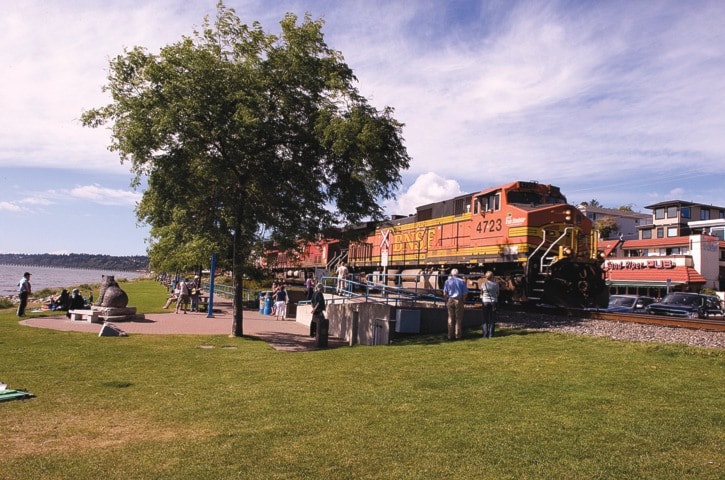Increased BNSF traffic through White Rock is a market-driven fact of life – and residents must understand the sound of train whistles are a necessary safety factor.
That’s the word from the railway’s corporate communications representative, Gus Melonas.
Melonas said this week that the railway is doing everything it can to minimize the noise in the community through upgraded tracks, equipment and rolling stock, but “when it comes to safety, you can’t take shortcuts.”
That’s particularly top-of-mind, he said, after a spate of trespasser fatalities on BNSF lines “between the border and Tacoma” over the previous week.
“We had four trespassers hit – and three fatalities – in the last eight days,” Melonas said. “The last thing we want to face is striking somebody. The main warning device is the whistle on the train – and the whistle is intended to be heard.”
Melonas was responding to a letter from Victoria Avenue resident Floyd Stanley in Peace Arch News’ Aug. 16 edition, in which Stanley charged there has been a significant increase in the number of trains – and train noise – through White Rock since 12 years ago.
Stanley, a retired school principal from Ontario, said that when he and his wife first came to White Rock, he considered the trains “unique and not a nuisance as there were only, on average, six trains a day passing through.” Now, he said there are up to 16 trains a day.
Stanley said they’ve had to shorten their twice-daily promenade walks, and noted whistles awaken them at all hours of the night.
But Melonas said the volume of traffic varies according to customer demand for transporting goods.
“We’re averaging 12 to 15 trains, but every day is different,” he said. “Sometimes it’s as low as nine, while other days it’s up to 15 or 16.”
Based on projections, demand for train movement of goods will increase, Melonas acknowledged, but noted there are cost, efficiency and environmental advantages over other methods of transportation.
With an average engine age of eight to nine years, the railway is working with more regularly upgraded equipment than most airlines or trucking fleets, he said.
"Each train that goes through White Rock takes an average of 300 trucks off the highway," he said. "And we've not had one haz-mat fatality since 1981 – not one. We're proud of our safety record."
Melonas disputed Stanley's claim that BNSF traffic has increased significantly due to contracts to move coal from B.C. interior to the Delta Port facility.
"The large majority is mixed freight, or general merchandise – everything from lumber and agricultural products to sugar and other sweeteners," Melonas said.
